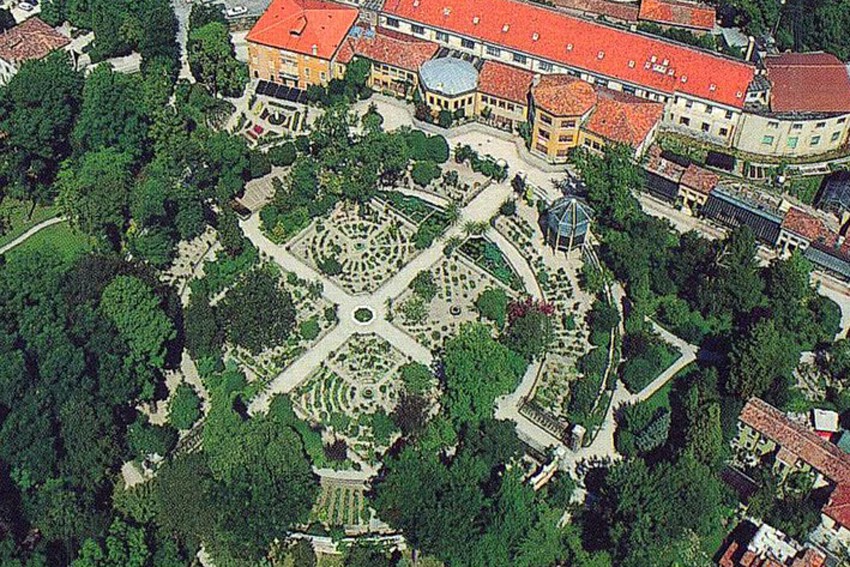Reconstructing Eden

The oldest botanic garden in the world is a matter of conjecture and might go back 10,000 years.
The oldest botanic garden in the world is a matter of conjecture and might go back 10,000 years. The oldest continuing botanic garden in the world is undoubtedly the botanic garden in Padua. The Orto Botanico Padova was founded as part of the ancient University of Padua by charter from the Venetian Senate in 1545. Rivals Pisa and Florence have long vied for primacy and their claims are often given credence. However a recent paper by Dumbarton Oaks scholar Anatole Tchikine comprehensively dismantles much of the evidence supporting such pretensions. The Gardens in Pisa and Florence have both changed sites but perhaps more importantly, there’s nocompelling evidence to support their foundation as botanic gardens until after 1545. Nonetheless, Pisa and Florence botanics remain of special significance in botanical history. While the Paduan Orto Botanico has continued to change for over 450 years the original layout of the garden remains substantially intact. The Orto was established as a `garden of simples’ – simples are essentially medicinal plants utilised without amendment for treating illnesses and ailments. The value of the Gardens to the university medical school was in ensuring consistency in the identification and use of simples by medical students. In essence the Orto provided a plantbased pharmacopoeia as well as a pharmacy for students and professors. The value of the plants themselves, supported by their accurate identification and provenance, required the construction a high brick wall to prevent theft. The Garden is essentially a square within a circle divided into four by walkways along the cardinal points of the compass. Interpretations of the design vary – from scientific pragmatism, to a theological representation of the rivers of Eden (and the four corners of the Earth) and to Platonic and neo-Platonic views of the circle as both perfect form and a symbol of the Heavenly City. Probably the design reflects both science and religion confounded by myth and magick. Of course even the ‘science’ underpinning the selection and identification of the simples represented a combination of Traditional Ecological Knowledge (or biocultural knowledge), folklore (or folk knowledge), theology and what we now recognise as scientific method – testing hypotheses and building on foundations on experimentation. While the overall design remains, the plant collections, the essential part of a botanic garden continues to change. In common with other botanic gardens the living collections are a river of biodiversity running through the garden. The only original specimen, a Vitex agnus-castus likely dating from the origins of the Orto, (and recorded with certainty from 1550) died in 1984. Significant living specimens remain. Goethe’s palm (Trachycarpus humilis) dating from 1585 is the oldest remaining plant – listed in a 1590 student text as Palm humile, the humble palm. Goethe records this plant as the inspiration for his influential 1790 treatise, Metamorphosis of Plants. The plane tree Platanus orientalis is the second oldest surviving tree, dating from 1680 and a ginkgo (Gingko biloba) planted in 1750 is the third oldest tree in the Orto. The Orto remains exceptionally well maintained – the challenge of maintaining a comprehensive teaching collection is evident in the presence of even small annuals such blowfly grass (Briza maxima), charismatic annuals such as the giant Amazon waterlily (Victoria amazonica) that enjoys the 25 degree bore water from 300 metres below Padua and the rich and remarkable collection of arid and sub-tropical ;container plants (including, for example, an Australian flame tree Brachychiton aff acerifolia) that are cosseted under glass through winter and allowed liberty in the open air over summer. Visitor numbers seem low – in the order ;of 60,000. While numbers might be higher if the gardens were free, the entry charge brings both precious revenue and enhanced security ;for both the living collections and visitors. The Gardens remain part of the University of Padua – a governance arrangement stretching back to their foundation. Significantly the Orto is expanding. In a city where space is at a premium the University’s recent purchase of land previously owned by the Jesuits associated with the adjacent St Augustine’s is remarkable. The expansion of the Orto sees the construction of both a visitor centre and a 0.5 hectare conservatory, as well as laboratories that will address the needs of visitors and researchers (as well as allowing the existing container collection to rest in peace summer and winter). The Orto Botanico Padova is a World Heritage Site – the Orto is of immense significance in understanding the origins of contemporary botanic gardens as critically important institutional frameworks for innovation in our relationship with plants . On my visit, the Prefecto, Prof Giorgio Casadoro, was exceptionally generous with his time. As coincidence so often has it, Adelaide arborist Rob Palamountain arrived at the ticket booth with his family while I was in the gardens with Prof Casadoro. Dr Carlo Camarotto who was ;manning the booth over the attendant’s lunch break pointed Rob in our direction! I’m not sure who was more surprised but I think it might well have been our Italian hosts! Stephen Forbes is the Executive Director of the Botanic Gardens of Adelaide